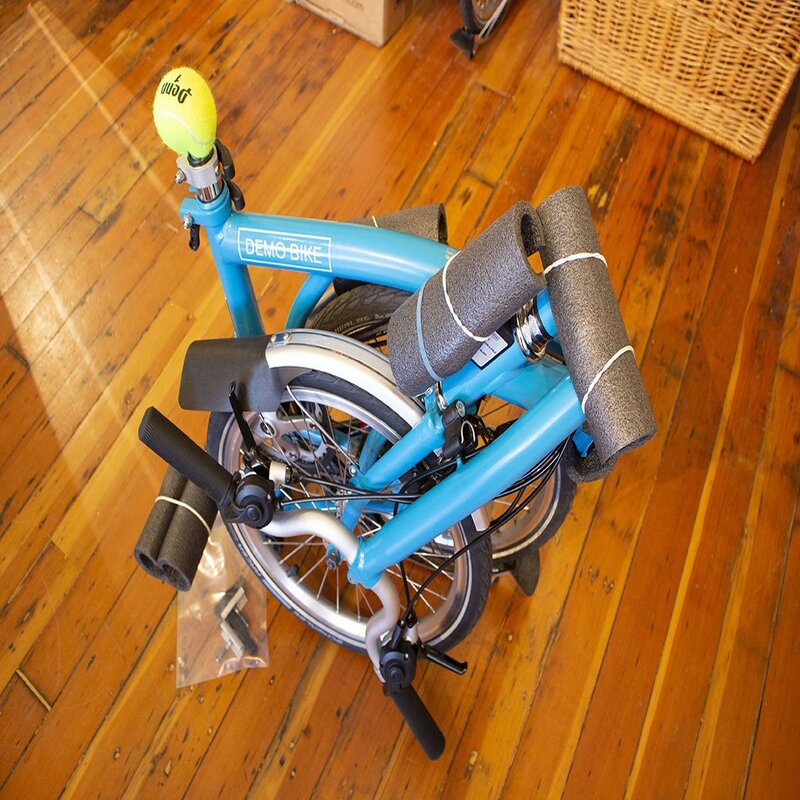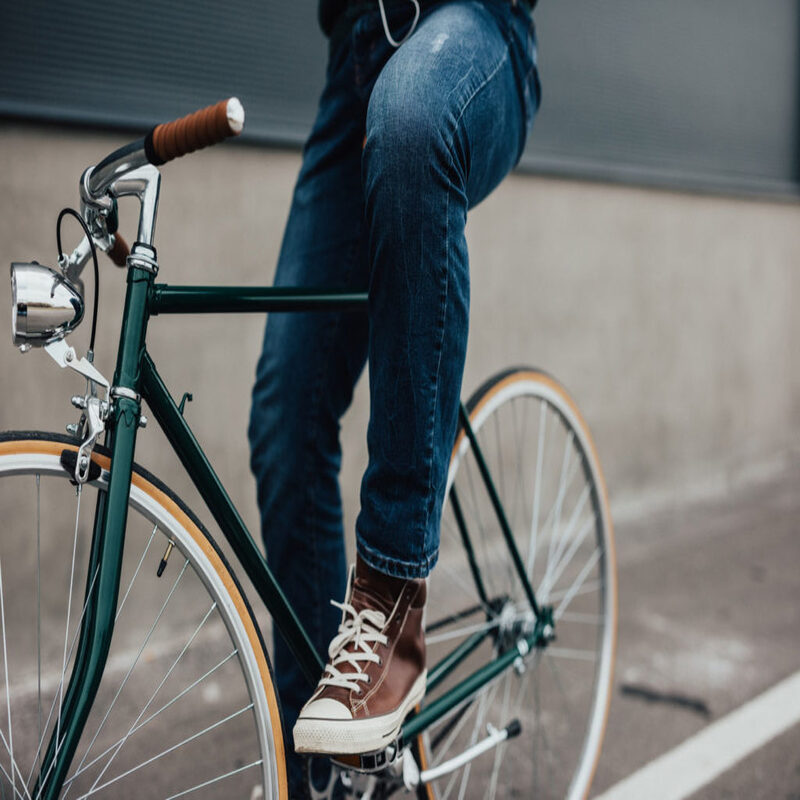Introduction to Bicycle Mechanics
Bicycles fascinate us, not just as a means of transport, but as machines of pure efficiency. Their design, functioning, and the ability to convert human energy into motion are art within the realms of physics. When we ponder over the question, ‘how does a bicycle work,’ we dive into a world where energy, force, and mechanics interplay seamlessly. Let’s peel back the layers of this everyday marvel to understand the science that propels it.
The essence of bicycle mechanics lies in kinetic energy, the core force that makes the wheels turn. As we pedal, our bodies generate energy that the bicycle transforms into motion. It’s a marvel how, with just a push of the pedals, we set a complex process in motion, culminating in kinetic energy that whisks us away to our destinations. This is where the magic happens, where up to 90% of our exertion turns into the kinetic force that moves the bicycle forward.
In essence, every part of the bicycle – from the wheels that contact the ground to the handlebars that steer our course – serves a distinct function. These components work in harmony to amplify our manual efforts into efficient travel. As simple as it might seem to ride a bike, the underlying principles of physics are constantly at play, ensuring a smooth ride. So join us as we explore the fascinating components that make up the humble bicycle and how together, they create a symphony of motion.

The Role of Kinetic Energy in Cycling
Kinetic energy is the hero of cycling. It transforms our muscle work into forward motion. When we push on the pedals, our legs create energy. This energy does not just disappear. A bicycle takes this energy and changes it to kinetic energy. Think of kinetic energy as the movement force that gets the bike rolling. A rider’s push turns into speed, making the bike move. It’s like magic, but it’s science.
Cycling is both exercise and transportation thanks to kinetic energy. The body’s effort moves the pedals, causing a chain of events. This makes the wheels spin, propels the bike, and thus, the cyclist glides forward. Pedal power equals bike motion, and this is all about kinetic energy at work. Remarkably, a bicycle can transfer 90% of this effort into movement. This makes riding one of the most power-efficient travel modes.
As we pedal, balance and momentum combine to keep the journey smooth. These forces prevent us from falling. They ensure the bike responds well as we head towards our goals. The science behind this balance is fascinating, and it relies heavily on kinetic energy. This energy type not only helps us move but also maintains stability as the wheels turn.
In summary, kinetic energy is the silent force behind every bicycle trip. Without it, there would be no cycling. So, the next time we hop on to cycle, let’s remember the unseen force driving us forward – kinetic energy.
Understanding Bicycle Wheels
Bicycle wheels are not just round objects that roll. They are at the heart of cycling science. As you pedal, the wheels transfer your kinetic energy to the road. This makes you move forward. Let’s break down how wheels make all the difference in a bike’s operation.
How Wheels Transform Energy Into Motion
Simple machines, wheels turn leg power into motion. The bigger the wheels, the faster you travel with each pedal turn. Thanks to their circular shape, wheels help to maintain the bike’s balance. They support your weight while pedaling efficiently.
Wheels have hubs, rims, and spokes. Together, they create a strong yet light wheel. Spokes spread out the weight, so wheels don’t bend under pressure. This design gives strength without adding drag. It’s a smart way to build a wheel.
The Role of Wheel Size and Speed
Wheel size affects speed. Taller wheels cover more ground per pedal stroke. This means fewer pedals to get the same distance. But, the taller the wheel, the more effort to start it spinning. Once rolling, these wheels help you go faster with less work.
In short, wheels play a big role in biking. They turn your energy into progress. They carry you, keeping the ride smooth. They also respond to your commands, guiding you where you want to go. So next time you ride, think of your wheels as the core of your bicycle’s mechanics.

The Functionality of Bicycle Gears
Bicycle gears are vital for efficient riding. They regulate speed and control effort when pedaling. Gears make it possible to cycle over different terrains without exhausting the rider. Adjusting gears will either increase speed or reduce it, depending on the need.
Understanding Gear Ratios and Their Impact on Cycling
Gear ratios determine how far you travel with each pedal stroke. A higher gear ratio means more distance covered but requires more effort. A lower gear ratio makes pedaling easier, especially uphill.
The Interplay Between Gears and Energy Use
Gears help manage your energy use. Efficient gear usage lets riders maintain steady speeds without tiring quickly. By switching gears, cyclists can keep their energy output constant, whether it’s a sprint or a climb.
To conclude, gears play a crucial role in how a bicycle work. They balance energy effort and help maintain desired speeds. Whether climbing hills or racing down a straightaway, gears are the key to a bike’s versatility.
The Science of Stopping: Bicycle Brakes
Even the smoothest rides need a halt, and that’s where bicycle brakes come into play. Brakes are pivotal for safety, giving you the power to stop the bike at will. The mechanism is straightforward and relies on physics to slow you down safely and effectively. Let’s look at how they function and their importance in cycling.
Brakes use friction to slow down or stop a bike. They consist of pads, also known as brake shoes, which press against the wheels. When you squeeze the brake levers, the brake shoes clamp onto the rim of the wheels. The pressure and rubbing action convert kinetic energy into heat. This change reduces the bike’s speed until it comes to a stop.
Most bikes feature one of two primary brake systems:
- Rim brakes: These are common and work by pressing the brake shoes directly onto the wheel’s rim.
- Disc brakes: They use a metal disc attached to the wheel hub and a caliper to press the pads against the disc.
Disc brakes are particularly effective in wet and muddy conditions, offering more consistent stopping power.
Remember, well-maintained brakes are crucial. Worn-out pads or misaligned brakes can hinder performance and increase stopping distances. Regular checks ensure your brakes are responsive and that you can always stop safely.
In essence, bicycle brakes exemplify applied science in motion. They are essential for controlled riding and, ultimately, the rider’s safety. Next time you press down on those levers, you’re not just stopping your bike; you’re engaging in a precise dance of physics and engineering.
Leveraging Control: How Bicycle Handlebars Work
The design of bicycle handlebars is deliberate, ensuring control and balance. Handlebars are a physical extension of the rider, permitting precise steerage and direction. They function much like levers, where length matters. Longer handlebars offer more leverage, simplifying the turning of the bike’s front wheel. Yet, they come with a trade-off – enhanced air resistance due to a wider arm spread.

Bicycling and STEM Education
Incorporating bicycles into STEM education can be both enlightening and engaging. The bicycle is not only an eco-friendly mode of transportation but also a practical demonstration of science, technology, engineering, and mathematics (STEM) concepts in action. By understanding the mechanics of how a bicycle works, students can gain a deeper appreciation of physics and engineering principles.
Understanding Momentum and Balance in Physics
Physics is a key part of cycling, where concepts like momentum and balance come alive. When students learn about the forces at work, such as gravity and friction, they can relate them to bicycle stability and movement. Analyzing the role of momentum in keeping the bicycle upright is an excellent practical lesson in physics.
Engineering Principles in Bicycle Design
Bicycles are marvels of engineering. From the gear system to the ergonomic design of the frame, exploring the engineering behind bicycles can enhance students’ understanding of how force and motion are managed. It is an engaging way for students to see the application of engineering concepts.
Mathematics and Gear Ratios
Mathematics plays an integral role in cycling efficiency, especially in understanding gear ratios. Calculating gear ratios and understanding their impact on speed and pedaling effort can turn a simple bicycle ride into a math lesson. This kind of hands-on learning can make complex mathematical concepts more accessible.
Technology in Cycling Innovations
Advancements in technology have transformed bicycling. Discussing topics such as the evolution of bicycle materials and design, or the mechanics of electric bikes, can provide insight into how technology shapes our transportation tools. It also encourages students to think about innovation in everyday objects.
Bicycles are a perfect example of how STEM is not confined to the classroom; it exists in the world around us, especially in the things we use every day. By focusing on bicycles, educators can provide a stimulating way to learn about STEM, making it relevant and practical for students. Bicycling offers an interactive, hands-on experience that can spark curiosity and foster a deeper understanding of fundamental STEM principles.
The Efficiency of Bicycles as Transportation
Bicycles stand out as highly efficient transportation. They convert most of the rider’s energy into movement. This is possible because bicycles utilize human power in a very effective manner.
A bicycle’s capability to change nearly 90% of the pedaling effort into kinetic energy is amazing. This makes it one of the most energy-efficient modes of travel available. Unlike cars that need gasoline or diesel, bicycles harness the power of the legs. Here, the strongest muscles of the body go into action.
With each pedal, the rider moves forward, not wasting much energy. This happens because of the clever design of bicycles. Wheels, gears, and frame geometry align to maximize every push. The result is a smooth and efficient forward motion. This efficiency is crucial in a world where energy conservation is more important than ever.
Also, bicycles help reduce traffic congestion. They take up less space than cars. This means more people can travel on the same road without causing jams. Bicycles also produce no emissions, making them eco-friendly.
Using bikes for transportation can greatly impact personal health too. They provide a good workout while commuting. This can lead to improved cardiovascular health, muscle strength, and stress reduction.
Overall, bicycles are a practical solution for efficient and sustainable travel. They are good for the environment, our health, and our wallets. Simple to operate, yet ingenious in their mechanics, bicycles empower people to move effectively. They are indeed much more than just two wheels and a frame.


